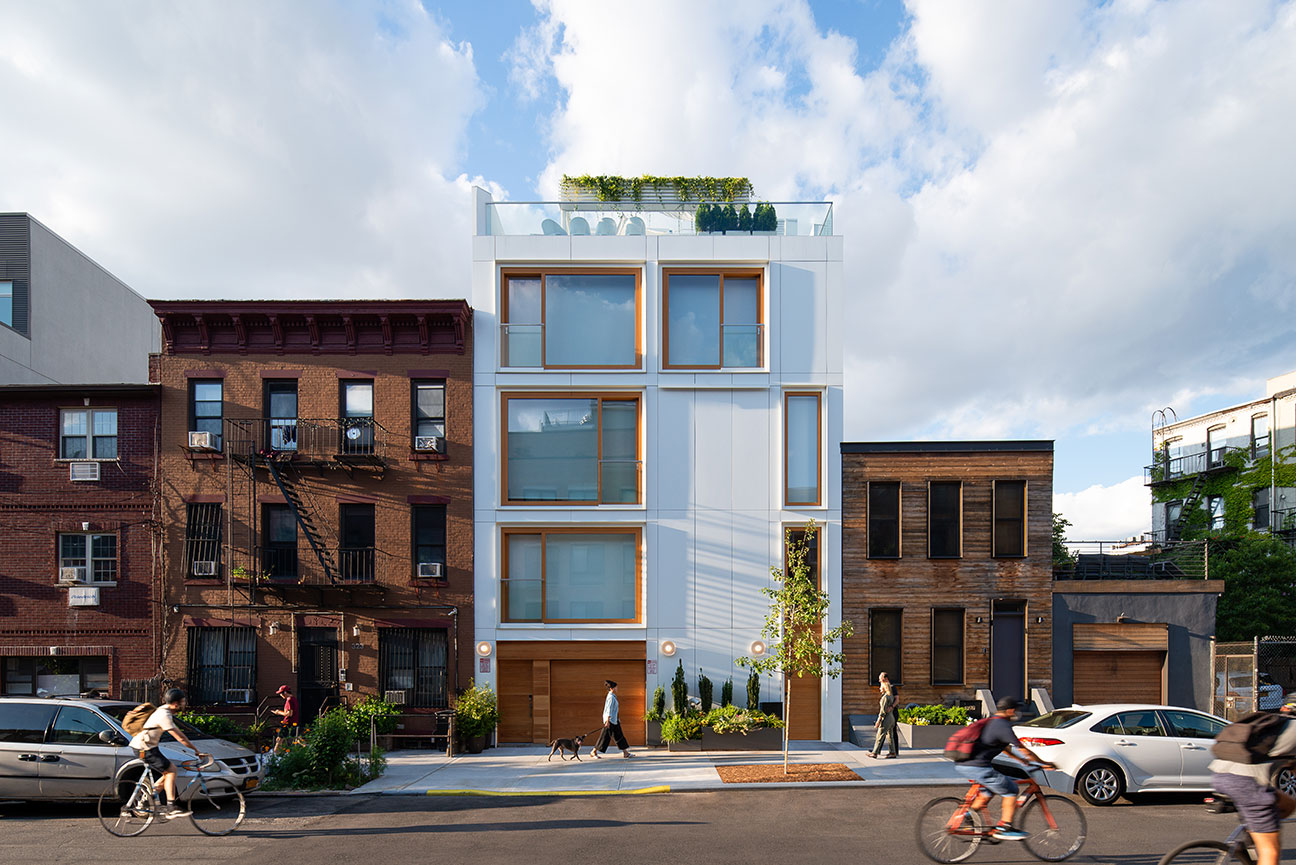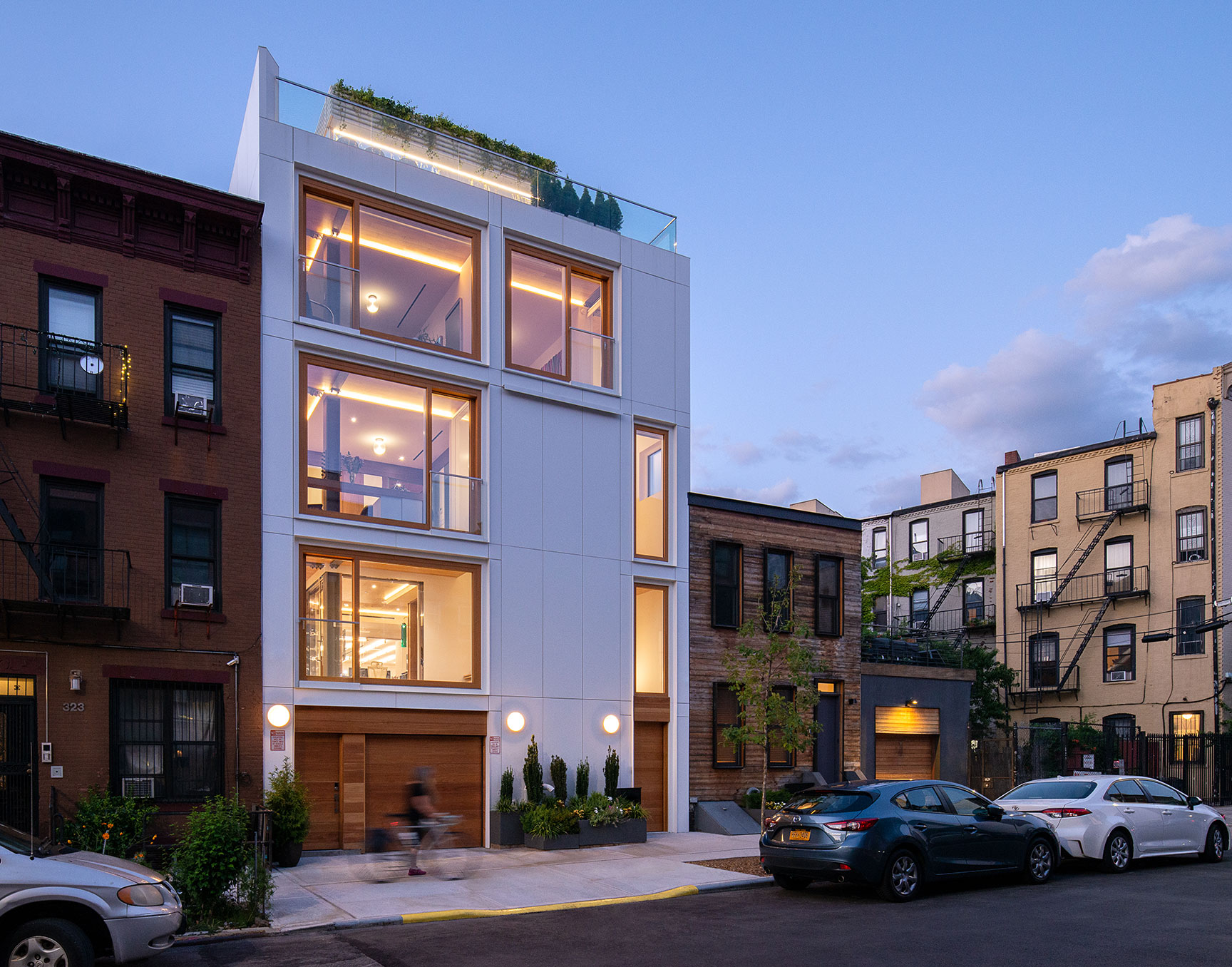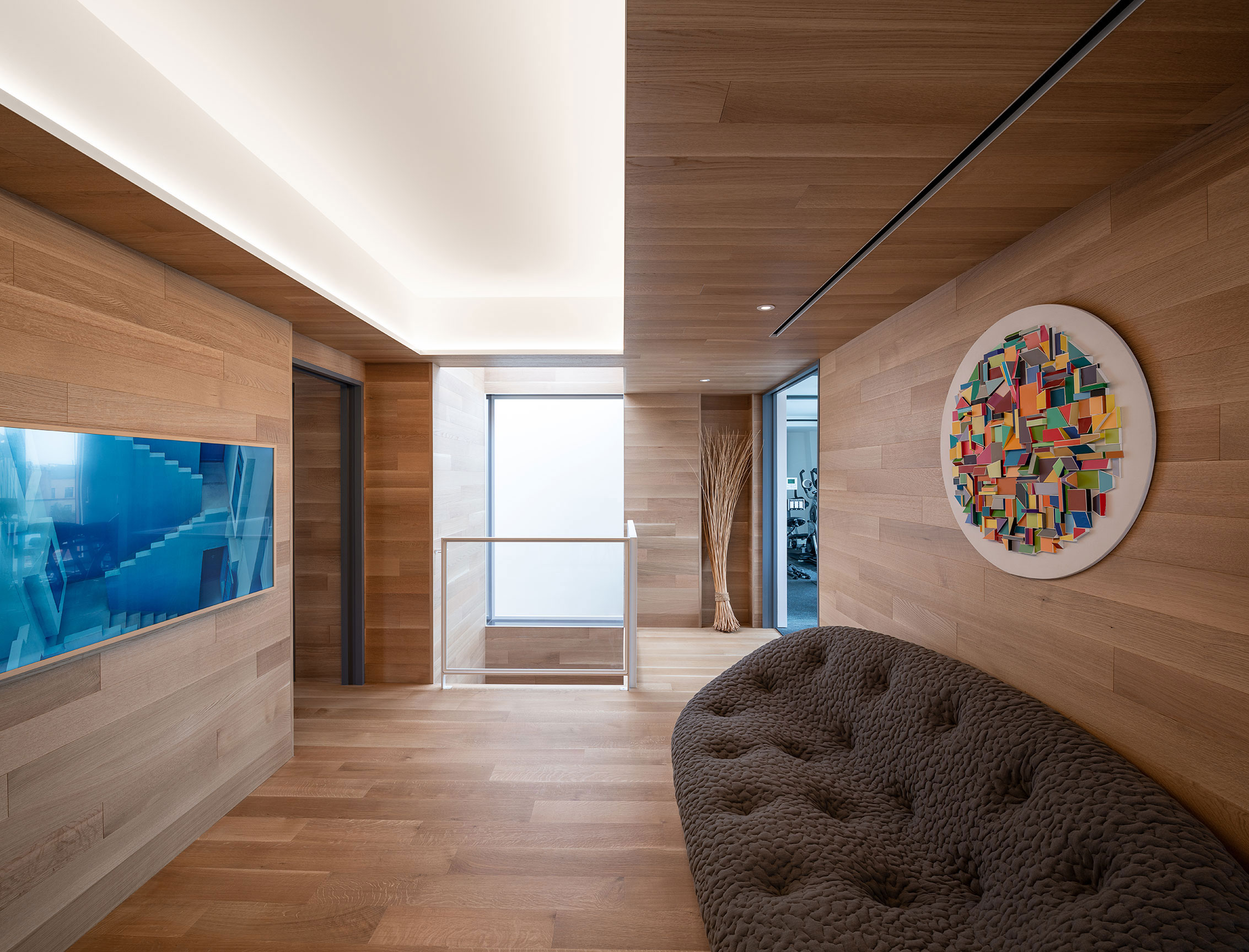Project description:
Prospect Heights Townhouse is a new 6,300 s.f. single family home built on the site of an existing auto repair garage. Construction was completed in 2021. The five story building’s design is based around a central core of living and service spaces surrounded by a continuous four foot wide circulation space. The gap between this nested volume and the building’s outer walls contains a series of stairs and corridors that provide a continuous circulation spiral from the ground to the top floor. This circulation space provides dramatic, top lit, tall ceiling spaces and views through the house. The ground floor living room is a double height space overlooked by a home office, and features a sun room connecting it to the rear garden. At the top floor, a flexible event space opens up to a pergola-topped roof terrace and garden. The entire design is configured to bring light deep into a space that would otherwise be cut off in a typical infill lot townhouse.
The concept of a volume nested within another volume is reinforced by simple, minimal surface articulation throughout. The clean surfaces of the interior are peeled away in selected areas to reveal detailed connections and rich materiality in the form of brass plate recesses, wood and glass panels, and marble and stone planes. The building structure is a steel frame with concrete deck incorporating radiant floor heating. Exterior cladding is a Dekton rain screen panel with wood lift-slide doors opening on a series of Juliet balconies.
The existing site consisted of two zoning and tax lots that contained a small wood frame house and the auto repair garage. OPerA Studio is also completing a renovation on the two story wood frame house. As found, an outdated tax lot line bisected the auto garage, making it impossible to build the new home without relocating the lot line. In addition to the tax lot apportionment, a Zoning Lot Development Agreement (ZLDA) between the two sites was executed to create a single zoning lot. Floor area rights were transferred to the lot for the larger building. The ZLDA also allowed for a substandard tax lot to be created for the existing two-story house. By filing the new house as an alteration application (brick walls and foundations of the garage were retained) we were able to use the pre-existing lot coverage to make a building footprint that would be larger than if the project was filed as new construction on these sites.

































